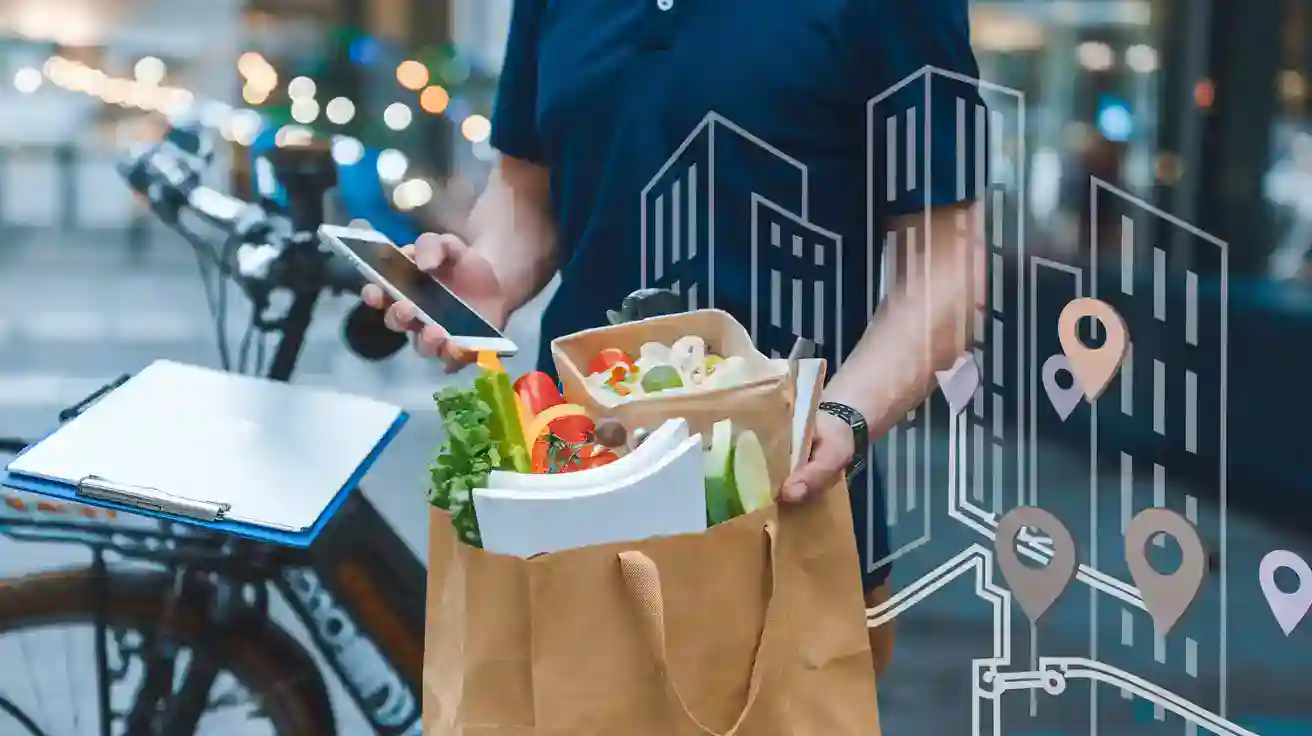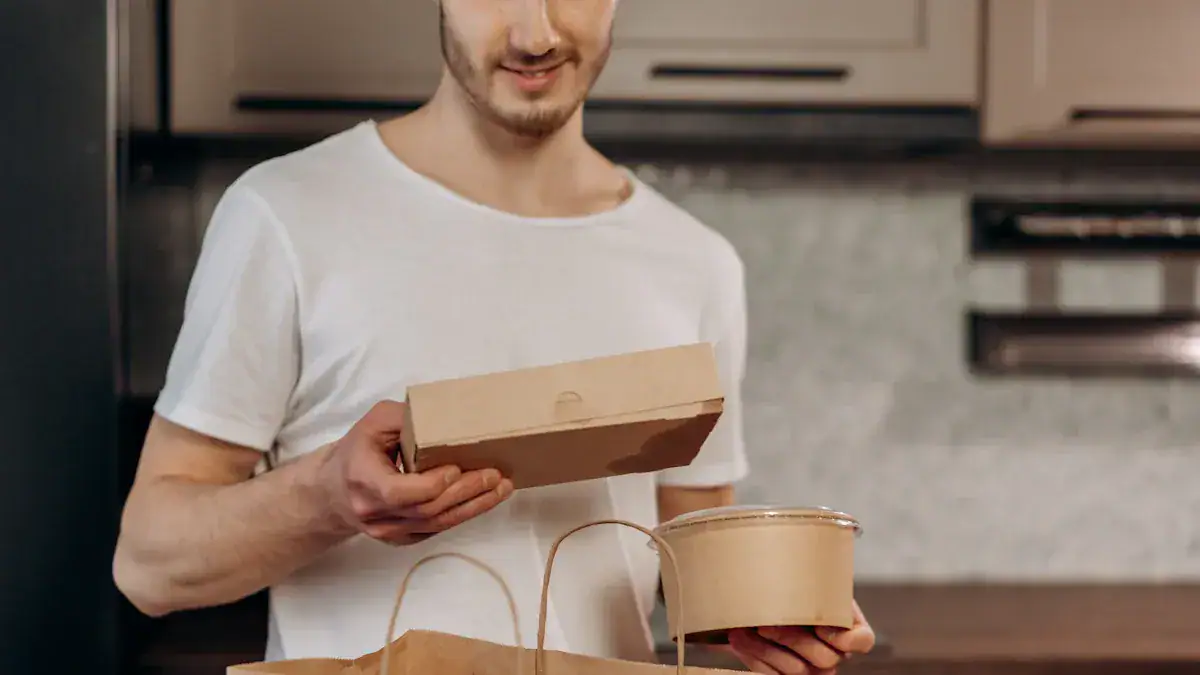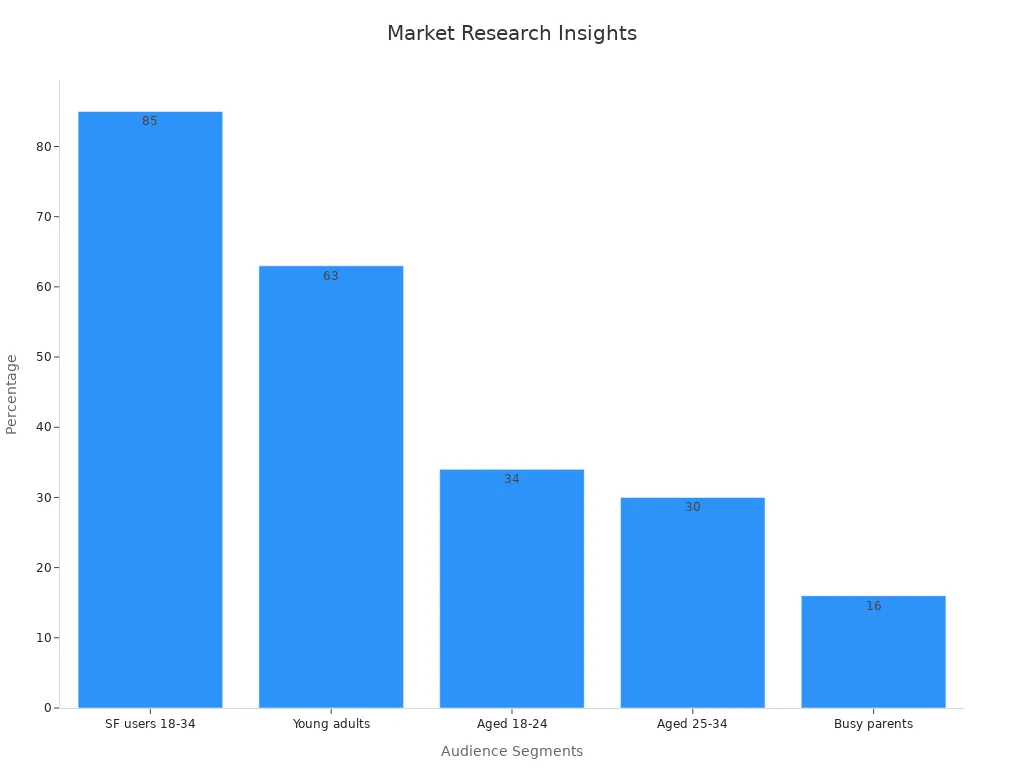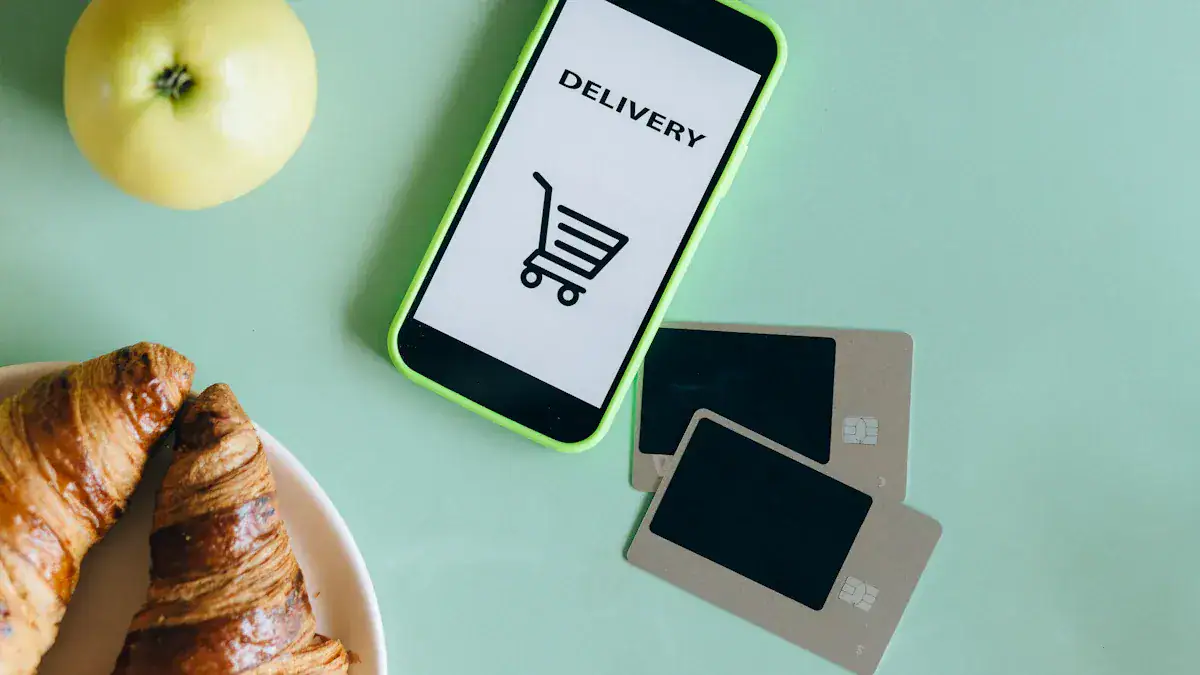How to start food delivery company

When I decide to start food delivery, I follow these steps: select a business model, register my company, set up technology like a food delivery app, and secure proper licensing. I analyze local demand and plan finances. The market for food delivery business continues to expand, driven by rising smartphone use, urban lifestyles, and innovative features. With careful planning and the right tools, I see that anyone can start a food delivery business and succeed. This food delivery guide helps food delivery entrepreneurs take action with confidence.
Key Takeaways
- Choose the right business model to match your goals and resources, balancing control, costs, and customer experience.
- Understand your target market by studying demographics, behaviors, and local demand to tailor your services effectively.
- Create a detailed business plan with financial projections and market analysis to guide your startup and attract investors.
- Secure all necessary licenses, register your business properly, and set up separate business finances for smooth operations.
- Focus on quality food packaging, reliable delivery teams, efficient logistics, and strong technology to deliver great customer experiences.
Plan Your Food Delivery Business

Choose a Business Model
When I decide to start a food delivery business, I always begin by selecting the right business model. The model shapes my daily operations, costs, and customer experience. I consider three main options:
| Aspect | Order Only Model | Order & Delivery Model | Fully Integrated Model |
|---|---|---|---|
| Description | Platform connects customers and restaurants; restaurants handle delivery | Platform manages orders and delivery; delivery by platform couriers | Platform controls cooking and delivery; owns entire process |
| Examples | Grubhub, JustEat | UberEats, DoorDash, Zomato | RocketFood, Extra Plate, Eat Purely |
| Key Advantages | Low operational complexity; commission from restaurants | Control over delivery experience; commission + delivery fees | Full control over user experience; potential for higher earnings |
| Challenges | Dependence on restaurant service quality; marketing needed | Timely delivery critical; resource management | High operational costs; risk of failure if costs not managed |
| Supporting Statistics | 60% of US consumers order food online twice a week; 60% of restaurants report incremental sales from online orders; delivery sales growing 20% annually | Same as left, with emphasis on delivery time and user experience | Same as left, with operational cost challenges |
| Consumer Behavior Insights | 57% of millennials prefer home delivery to watch TV/movies | Same as left | Same as left |
| Market Size | Projected revenue of US$231.30bn in 2023 | Same as left | Same as left |
I weigh the pros and cons of each model. If I want low complexity, I might choose the order-only model. If I want more control, I consider the order & delivery or fully integrated models. My choice affects the cost to start a food delivery business, so I analyze my resources and goals before making a decision.
Define Your Market
Understanding my target market helps me tailor my services and marketing. I look at demographics, behaviors, and locations. For example, most DoorDash users in San Francisco are aged 18-34, and 63% of young adults use food delivery apps. Busy parents and foodies also make up a large part of the market. I use this data to focus my efforts where demand is highest.
| Segmentation Type | Key Statistics / Characteristics |
|---|---|
| Demographic | – 85% of DoorDash users in San Francisco are aged 18-34 – 63% of young adults use food delivery apps – 34% of 18-24 and 30% of 25-34 age groups use food delivery apps – 16% of busy parents use food delivery apps |
| Behavioral | – Consumers too busy to cook or prefer convenience – Foodies seeking quality food at home – Employers ordering for staff |
| Psychographic | – Typical consumer is a ‘Hedonist’ personality type valuing quality, socializing, new experiences |
| Geographic | – DoorDash operates in 7000+ cities across US, Canada, Australia, Japan – 30% of deliveries in rural areas – 37% deliveries in low-income communities – Focus on urban, smaller cities, rural, and low-income areas |

I also study competitors and local demand. I check how many people order food online, what types of food are popular, and which areas lack good delivery options. This research helps me position my food delivery business for success.
Create a Business Plan
A solid business plan guides every step as I start a food delivery business. I include my business model, target market, marketing strategy, and financial projections. I use quantitative tools like income statements, cash flow statements, and balance sheets to forecast costs, revenues, and break-even points. Market and competitor analyses help me spot opportunities and risks.
Tip: I always plan for cash flow, not just profits. Profitability does not guarantee financial stability, especially in the early months.
Here are some key statistics that shape my planning:
| Statistic Description | Value/Metric |
|---|---|
| Percentage of U.S. consumers ordering food online twice a week | 60% |
| Percentage of restaurants reporting sales increase due to delivery | 60% |
| Average sales increase reported by restaurants due to delivery | 20% |
| Indian food delivery market revenue projection by 2025 | $13 billion |
| Global online platform delivery market projection by 2028 | $340.80 billion |
| CAGR for global online platform delivery market (2024-2028) | 4.79% |
| Expected user penetration by 2028 | 19.1% |
| Global online food delivery market value in 2022 | $221.65 billion |
| Anticipated CAGR for global market (2023-2030) | 10.3% |
I also consider the cost to start a food delivery business. This includes technology, marketing, staff, insurance, and delivery logistics. For example, route optimization can save 20-40% on transportation costs, and food waste rates range from 3-10%. I factor in seasonal food costs, spoilage, packaging, and insurance premiums. These details help me avoid surprises and build a sustainable operation.
Morgan Stanley projects a 16% annual compound growth rate for the online food delivery market over the next five years. This growth shows strong potential for anyone who wants to start a food delivery business. I use market sizing, consumer surveys, and financial modeling to create realistic forecasts. I analyze macroeconomic factors and consumer trends to refine my strategy.
Note: A detailed business plan with clear financial projections increases my chances of attracting investors and managing risks.
Legal and Financial Setup
Register Your Business
I always start by choosing the right business structure for my food delivery business. I consider options like sole proprietorship, partnership, corporation, or LLC. This decision affects my liability, taxes, and how I manage finances. After deciding, I register my business with state and local authorities. I also apply for an Employer Identification Number (EIN) from the IRS. This unique tax ID is essential for opening a business bank account and managing taxes.
Get Licenses & Permits
Securing the proper licenses and permits is a critical step. I make a checklist to stay organized:
- Business License: Required for all food delivery businesses. Costs vary by location and include application fees.
- Food Service License: Issued by the health department. This usually costs around $1,000 or more and requires inspections.
- Health and Safety Permits: Includes employee health permits, waste disposal permits, and regular health inspections.
- Building, Zoning, and Signage Permits: Ensures my business complies with local codes.
- Liquor License: Needed if I plan to deliver alcohol. Costs and approval times can be significant.
I have seen how cities like Maumelle, Arkansas, and New Canaan, Connecticut, improved compliance and efficiency by streamlining their permitting processes. Faster approvals and better systems help me avoid delays and stay compliant with food safety regulations.
Open a Bank Account
I open a separate business bank account as soon as I receive my EIN. This keeps my personal and business finances distinct. It makes tax management easier and gives me a clear view of my cash flow. I compare bank fees and services to find the best fit for my food delivery business. I also consider opening a business credit card to build credit and manage expenses.
Plan Financing
I create detailed financial projections before I launch. I include income statements, balance sheets, and cash flow statements. These documents help me understand the cost to start a food delivery business and track my progress. I work with an accountant who knows the delivery industry. For funding, I explore options like SBA loans, PayPal working capital, credit cards, government grants, and crowdfunding. I also plan for equipment, vehicles, and hiring drivers. Careful financial planning helps me manage costs and grow my food delivery business.
Start Food Delivery Operations
Menu & Packaging
When I start food delivery, I focus on menu design that travels well. I select dishes that maintain quality during transport. Fried foods, soups, and items with sauces need special attention. I avoid items that get soggy or lose texture quickly. I work with chefs to test each dish for delivery suitability.
Packaging plays a critical role in my food delivery service. I use insulated, leak-proof containers and compartmentalized trays to keep food fresh and prevent mixing. Tamper-proof seals and tight-fitting lids protect food from contamination and spills. I choose packaging that is easy to open and enhances the customer experience. A Shorr Packaging Corp. survey found that 68% of consumers link packaging quality to brand quality. I also consider eco-friendly options, since over half of millennials prefer sustainable packaging. Using biodegradable or recyclable materials helps me attract eco-conscious customers and build loyalty.
Tip: I always separate hot and cold foods in different containers to maintain temperature and prevent sogginess. This small step improves customer satisfaction and reduces complaints.
High-quality packaging not only preserves food but also builds trust. Customers see sturdy, well-designed packaging as a sign of professionalism. I include branding elements on my packaging to make my food delivery service memorable and encourage repeat orders.
Kitchen or Partners
I decide whether to operate my own kitchen or partner with local restaurants. Running my own kitchen gives me full control over food quality, menu, and preparation standards. This approach works well if I want to offer a unique meal delivery service or focus on a specific cuisine. I invest in commercial kitchen equipment, hire skilled staff, and set up strict food safety protocols.
Partnering with established restaurants allows me to scale quickly and offer a diverse menu. I select partners based on their reputation, food quality, and ability to handle delivery orders. I negotiate clear agreements covering order handling, packaging standards, and revenue sharing. Regular communication with partners ensures consistent service and quick resolution of issues.
Note: I always verify that all kitchens and partners comply with local health regulations and maintain high hygiene standards. This protects my brand and keeps customers safe.
Hire Delivery Team
A reliable delivery team is the backbone of my food delivery service. I recruit drivers who understand the importance of safe driving and proper food handling. I provide thorough training on safety procedures, customer service, and the use of delivery management software. Well-trained drivers help maintain food quality and ensure timely deliveries.
I schedule regular training sessions to keep my team updated on best practices and new technology features. I use data analytics to identify peak delivery times and adjust staffing levels. Tools with route navigation and delivery verification features help my drivers perform efficiently. I encourage feedback from my team to improve operations and address challenges quickly.
- Training drivers in safety and food handling maintains product quality.
- Educating staff on route optimization and inventory management software reduces errors and increases efficiency.
- Regular updates on software features keep the team sharp and responsive.
Tip: I reward top-performing drivers with bonuses or recognition. This motivates my team and reduces turnover.
Set Up Logistics
Efficient logistics set my food delivery service apart from competitors. I define delivery zones based on distance and traffic patterns to optimize driver coverage. I select vehicles that maintain food temperature and offer good fuel efficiency. I use route optimization software that considers distance, traffic, and delivery windows. This software provides real-time updates and helps me adjust routes quickly.
I analyze delivery data to identify bottlenecks and improve route efficiency. I batch orders going to the same area to reduce stops and handling time. I train drivers on fuel-efficient driving and customer service to enhance performance. Advanced analytics and AI help me continuously improve service quality, reduce costs, and meet customer expectations for timely deliveries.
| Logistics Factor | My Approach |
|---|---|
| Delivery Zones | Define by distance and traffic patterns |
| Vehicles | Choose for temperature control and fuel savings |
| Route Optimization | Use software with real-time updates |
| Order Batching | Combine orders for efficiency |
| Performance Metrics | Track delivery times, fuel use, and driver stats |
Note: I monitor customer density and delivery frequency to adjust routes and staffing. This ensures I meet demand without overextending resources.
By focusing on these operational strategies, I deliver food safely, efficiently, and at the highest quality. I use technology and training to optimize every step, from kitchen to customer door. This approach helps me build a successful food delivery service that stands out in a competitive market.
Technology & Online Presence

Build Website or App
When I start an online food delivery business, I focus on building a user-friendly website or food delivery app. I know that most customers expect a seamless experience from browsing menus to placing orders. I use mobile-first design because most users order from their phones. I include features like real-time order tracking, push notifications, and easy navigation. I also make sure my food delivery app supports contactless ordering, which improves order accuracy and meets customer preferences for minimal contact. AI helps me personalize social media content, respond to feedback instantly, and optimize ad campaigns, which increases my brand’s visibility and engagement.
Tip: I always test my food delivery app with real users before launch to catch usability issues early.
Set Up Ordering System
A robust ordering system forms the backbone of my online food delivery operations. I integrate real-time order tracking, push notifications, and customizable order forms. My food delivery app connects with payment processors like Stripe and PayPal for secure transactions. I use inventory management tools to sync ingredient levels and prevent overselling. Automated delivery routing in my food delivery app helps drivers find the fastest routes, which improves efficiency and customer satisfaction. I also set up email marketing and loyalty programs to keep customers coming back. Promotions and dynamic menu updates in my online food delivery system help me attract new users and boost sales.
- 91% of consumers prefer supporting small businesses if ordering is convenient and affordable.
- 65% of customers will pay more for faster delivery, so I make speed a priority in my food delivery app.
Payment Gateways
I choose payment gateways that offer security, flexibility, and support for multiple payment methods. My food delivery app integrates with trusted providers like Stripe, PayPal, and Razorpay. I ensure PCI compliance to protect customer data. I also offer digital wallets and contactless payment options, which are popular in online food delivery. Fast, secure payments reduce cart abandonment and build trust with my customers.
Technology Stack
Selecting the right technology stack is crucial for my online food delivery business. I use backend frameworks like Node.js or Django for scalability and security. MySQL or MongoDB handle my data storage needs. I host my food delivery app on cloud platforms like AWS or Google Cloud to ensure reliability and handle traffic spikes. Real-time features like Firebase support instant order updates and notifications. Analytics tools such as Google Analytics help me monitor user behavior and improve my food delivery app continuously.
| Component | Features / Technologies | Contribution to Food Delivery Operations |
|---|---|---|
| User, Restaurant, Delivery, Admin Panels | Real-time order tracking, order management, notifications, analytics | Seamless management of orders and logistics |
| GPS Integration | Route optimization | Faster deliveries, reduced costs |
| Backend Frameworks | Node.js, Django, Ruby on Rails | Scalability and security |
| Database Management | MySQL, PostgreSQL, MongoDB | Secure data storage |
| Cloud Hosting | AWS, Google Cloud | High availability |
| Payment Gateways | Razorpay, Stripe, PayPal | Secure payments |
| Real-Time Features | Firebase | Instant updates |
| Analytics Tools | Google Analytics, Mixpanel | Performance monitoring |
I rely on AI-driven route optimization and chatbots to improve efficiency and customer support. Data analytics in my food delivery app helps me personalize recommendations and spot operational issues. When I researched how to build a food delivery business app, I found that a strong tech stack reduces food cost variance and streamlines operations.
Note: I track key metrics like delivery time, order accuracy, and customer retention to measure my food delivery app’s performance and make data-driven improvements.
Launch & Grow Your Food Delivery Business
Marketing Strategies
When I launch my food delivery app, I focus on digital marketing and local promotions to attract new users. I use social media platforms like Instagram and Facebook, targeting local hashtags and community groups to boost visibility. I run referral programs that reward customers with discounts or free delivery for bringing in friends. This approach helped platforms like Uber Eats grow rapidly. I also partner with popular local restaurants to tap into their customer bases. Email marketing remains a powerful tool for me. For every $1 I spend, I see an average return of $42. I segment my email lists by delivery zones and order frequency, which allows me to send personalized offers that increase engagement.
| KPI / Metric | Purpose / Validation Role |
|---|---|
| Revenue | Measures financial success and growth driven by marketing efforts |
| Orders | Tracks volume of transactions indicating customer engagement |
| Retention | Indicates customer loyalty and effectiveness of retention campaigns |
| Churn | Measures customer loss, helping identify marketing weaknesses |
| App Downloads | Shows reach and effectiveness of app promotion campaigns |
| Customer Acquisition Cost (CAC) | Assesses cost efficiency of marketing in acquiring new customers |
| ROI | Quantifies profitability of marketing campaigns |
| Social Media Engagement | Validates effectiveness of social media marketing efforts |
I track these metrics in my food delivery app dashboard to measure campaign effectiveness and adjust my strategy. AI-driven personalization and automated follow-ups help me deliver relevant content and offers, increasing user engagement.
Customer Service
I know that excellent customer service sets my food delivery service apart. I train my team to focus on reliability, assurance, and maintaining food quality. I make sure my food delivery app provides real-time order tracking and seamless communication. Customers value traceability and professional delivery personnel. I monitor ratings and reviews closely, using feedback to improve the customer experience. Research shows that high customer satisfaction leads to repeat orders and stronger loyalty. I prioritize emotional engagement and system reliability, which increases satisfaction and encourages customers to reuse my food delivery app.
Tip: I always respond quickly to complaints and resolve issues with empathy. This builds trust and keeps customers coming back.
Analyze & Optimize
I rely on analytics to optimize my food delivery app and operations. I use data to identify popular menu items, peak order times, and delivery bottlenecks. Time series analysis helps me track trends among new and returning customers. I integrate my delivery management software with my POS system, which centralizes data and streamlines order processing. AI and machine learning improve route accuracy and speed, reducing delivery delays. I monitor key metrics like app downloads, order volume, and customer satisfaction to guide my decisions. Predictive analytics help me anticipate demand and adjust staffing or inventory. By continuously analyzing performance, I adapt to market trends and keep my food delivery app competitive. Food delivery entrepreneurs who embrace data-driven strategies see better retention and profitability.
Starting a food delivery business requires careful planning and a focus on quality. I select the right business model, research my market, and design menus that travel well. I optimize delivery routes and use targeted marketing to reach new customers. Companies like Flourist show that efficient delivery can drive growth and long-term loyalty. I stay adaptable and always put customers first. Now is the perfect time to draft a business plan or research local regulations. The food delivery industry offers strong growth and real rewards for those ready to act.
FAQ
How much money do I need to start a food delivery company?
I usually recommend a minimum of $10,000 to $50,000. This covers technology, marketing, licenses, and initial operations. The exact amount depends on your business model, location, and scale.
Do I need a custom app or can I use existing platforms?
I can launch quickly using white-label solutions or third-party platforms. If I want full control and branding, I invest in a custom app. Both options work, but custom apps require more time and money.
What licenses are required for a food delivery business?
I always secure a business license, food service permit, and health department approval. If I deliver alcohol, I apply for a liquor license. Local requirements may vary, so I check with my city or county office.
How do I ensure food stays fresh during delivery?
- I use insulated bags and tamper-proof packaging.
- I separate hot and cold items.
- I train drivers on proper food handling.
These steps help me maintain food quality and customer satisfaction.

